12 Things to Know Before You Host a Wine Tasting Party: Don’t Be That Host

Hosting a wine tasting party can be a fun and sophisticated way to gather friends and family. 🥂 It’s not just about sipping wine; it’s about exploring new flavors, learning more about different types of wine, and enjoying good company.
Whether you’re a wine connoisseur or just someone who enjoys a good glass of red, you’ll find that hosting a wine tasting can be a rewarding experience.
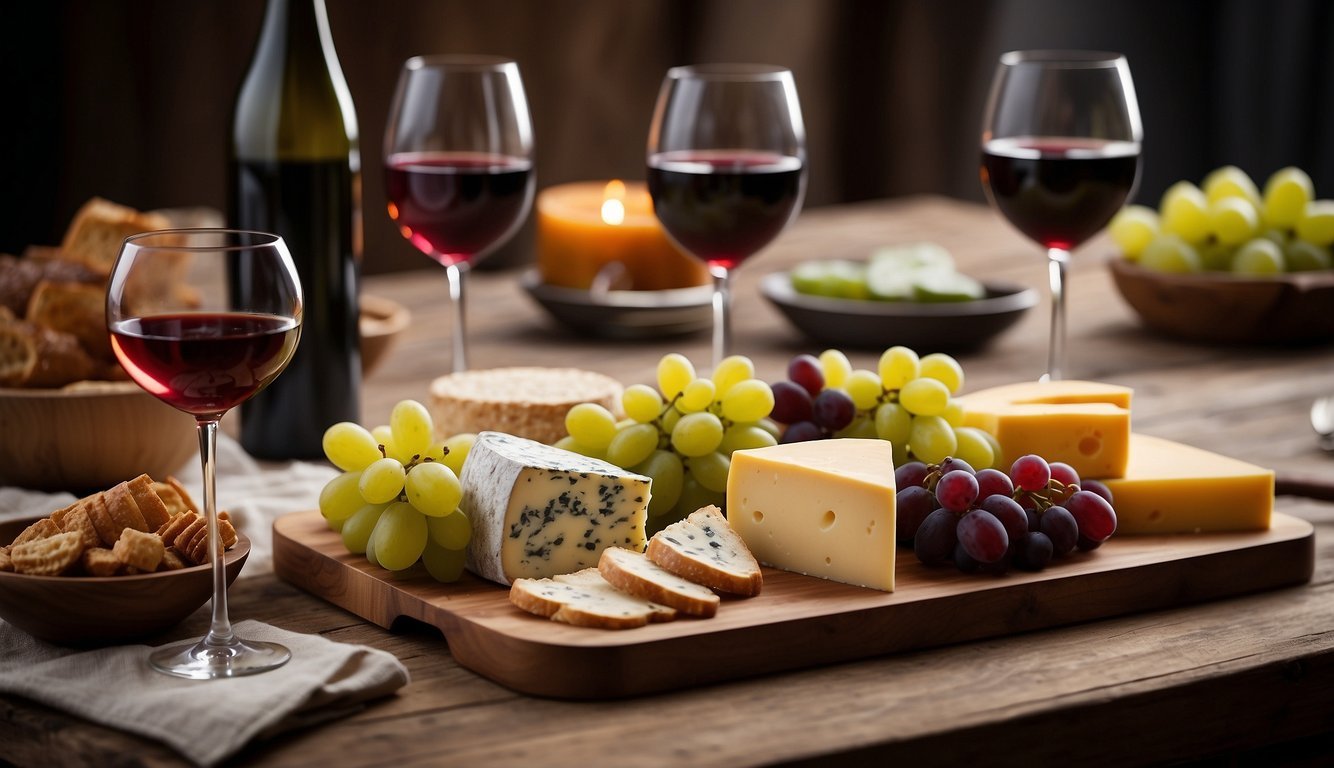
Want to make your wine tasting party a hit? Knowing a few key things before you start planning can help ensure everything runs smoothly.
From selecting the right wines to creating a comfortable atmosphere, there are several important factors to consider.
Get ready to impress your guests with your hosting skills and create an unforgettable evening!
1) Choose a Theme
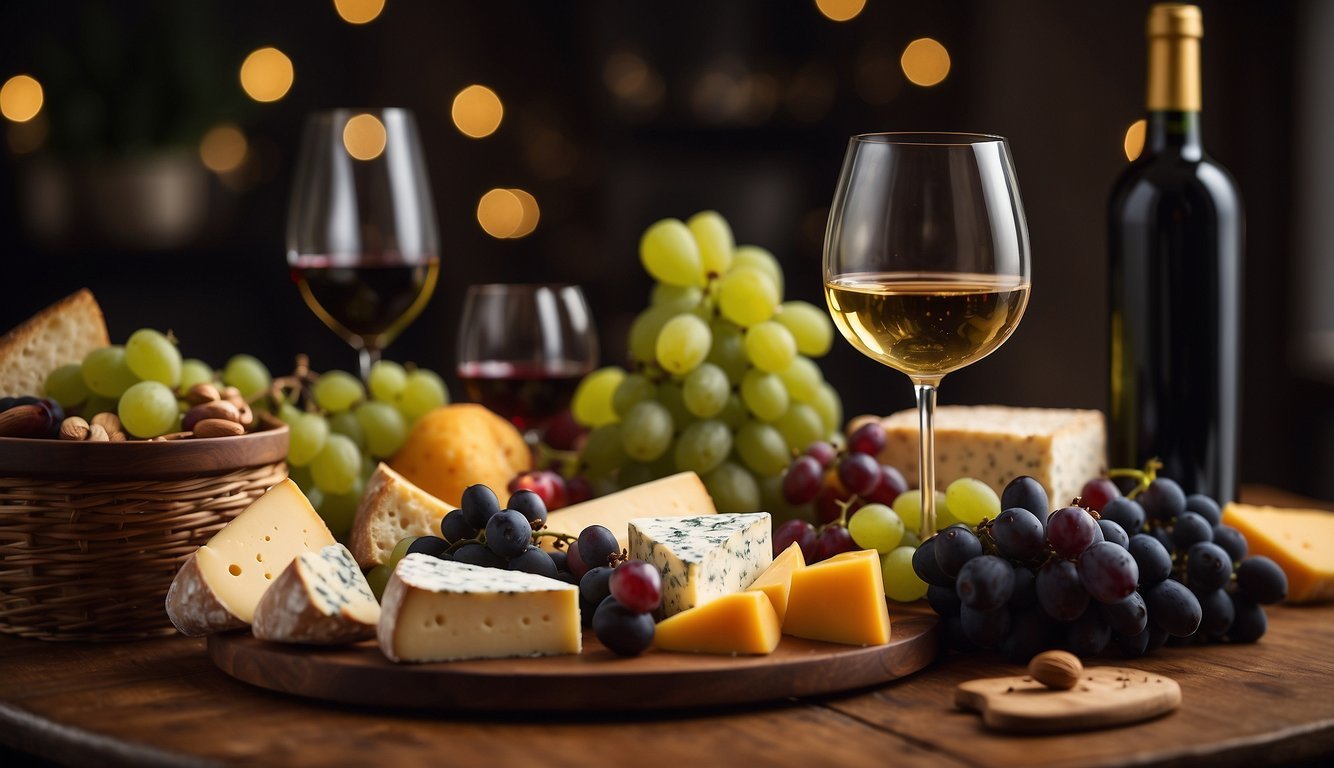
Picking a theme for your wine tasting party makes it more fun and focused 🎉.
A good theme can guide your wine selection and set the mood for the event.
Themes can be based on various factors like regions, grape varieties, or even wine colors.
For example, you might choose an Italian Wine Night, where all wines come from Italy 🍷.
Or, you could focus on Pinot Noir from around the world.
This way, guests can experience and compare different wines.
Another idea is to select wines based on seasonal themes.
In summer, you might go for a light and refreshing whites and rosés theme.
In winter, richer reds can be a cozy and warming choice.
Themes can also be more playful, like “Wines Under $20” or “Organic Wines.” This adds a layer of intrigue and can make the wine tasting experience more accessible and diverse.
Choosing a theme not only narrows down your wine choices but also adds a storytelling element to the evening.
It gives guests something to talk about and look forward to, making your party memorable and unique.
2) Send Invites Early
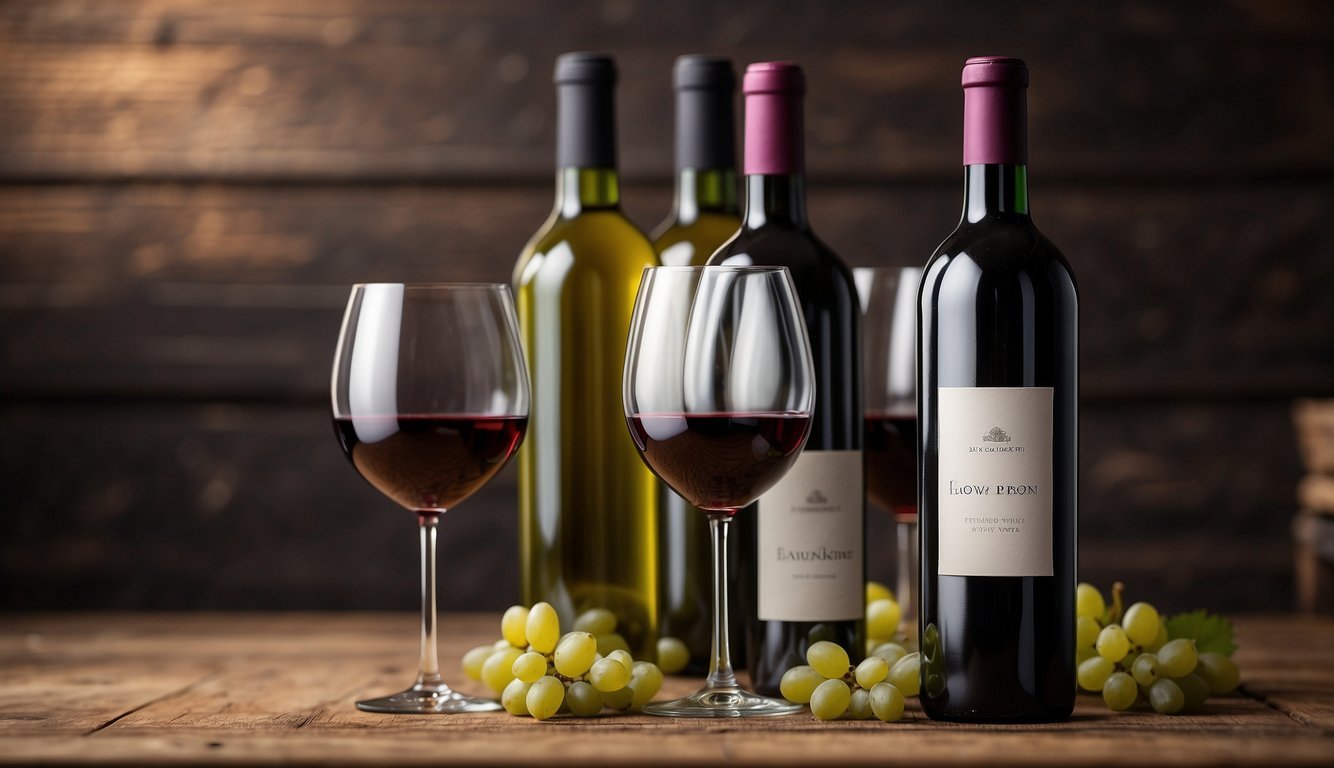
Start by sending out invites at least two weeks in advance.
This gives your friends plenty of time to free up their schedules. ✉️
Use a mix of digital and physical invites.
A printed card adds a special touch, while an email or text is convenient. 💌
Include all the details: date, time, location, and any special instructions, like bringing a favorite bottle.
Following up with a reminder a few days before helps ensure everyone remembers. 📅
3) Select the Right Wines
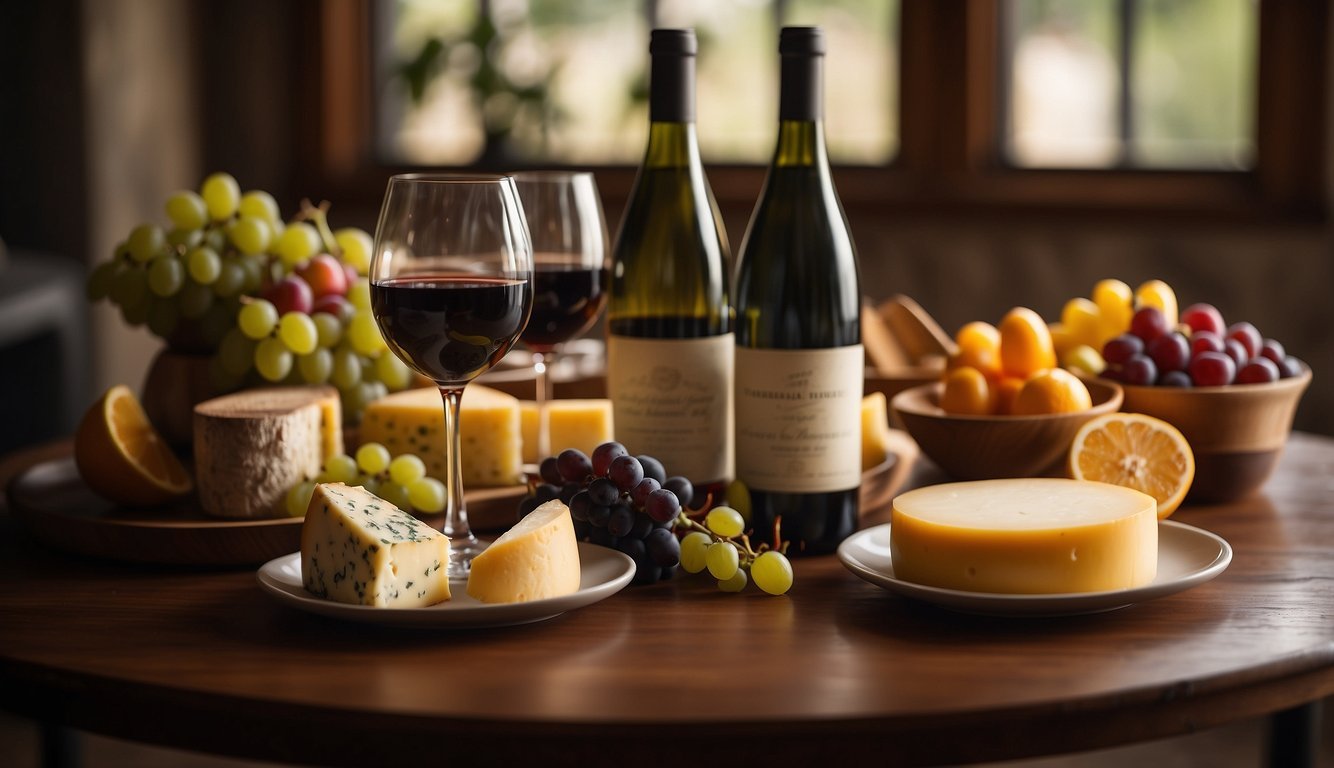
Choosing the right wines can make or break your wine tasting party.
Aim for a selection of 4-6 wines with a common theme, like a specific grape variety or a wine region.
Starting with a grape like Pinot Noir or a region such as Tuscany is a good idea.
Get enough wine glasses so each guest can taste two wines side-by-side.
This helps compare flavors more easily.
Ensure that you have a mix of white and red wines if you’re going for variety.
Keep the tasting area neutral-smelling. 🚫 Strong odors like bacon 🥓 can affect the taste of the wine, so make sure the room is free of strong scents.
Make sure each guest has a little over half a bottle of wine to enjoy.
For an 8-person party, plan on about 5 bottles.
This way, everyone gets a half-glass of each wine without going overboard.
4) Provide Tasting Notes
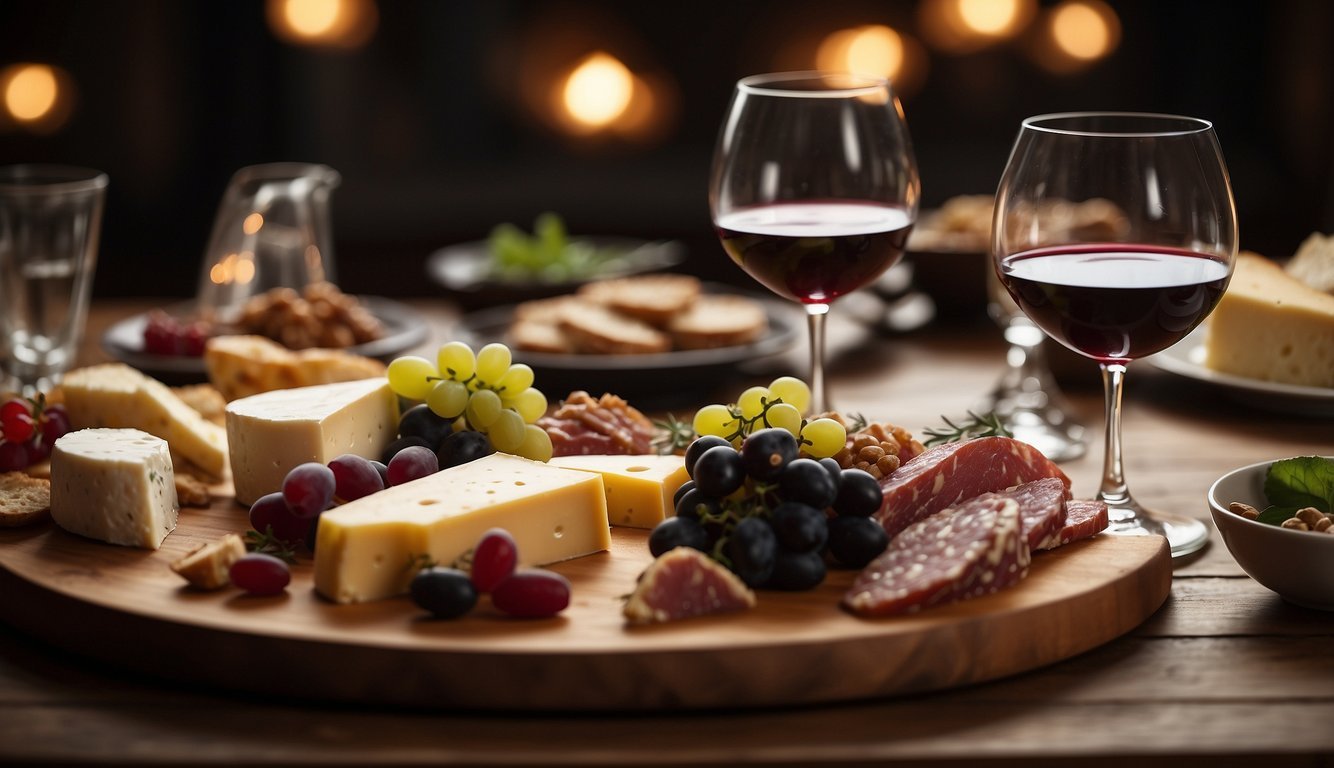
Hand out pens and paper for guests to jot down their thoughts on each wine 🍷.
Creating a simple tasting grid can help them focus on key aspects like aroma, taste, and color.
Make sure to explain some common wine terms like “tannins,” “body,” and “finish.” This will make it easier for everyone to describe what they’re tasting.
Set up a white background and clear glassware to help guests observe the wine’s color.
A plain white tablecloth or paper works great.
Encourage your guests to note specific fruit flavors, spices, or other elements they detect.
This makes the tasting more interactive and fun.
For an added touch, pre-print tasting sheets with the names and regions of each wine.
You can leave space for personal notes to make this a more memorable experience.
Lastly, remind everyone that there are no wrong answers! Wine tasting is subjective, so it’s all about personal preference and discovery.
Enjoy the process and have fun! 🎉
5) Include Palate Cleansers
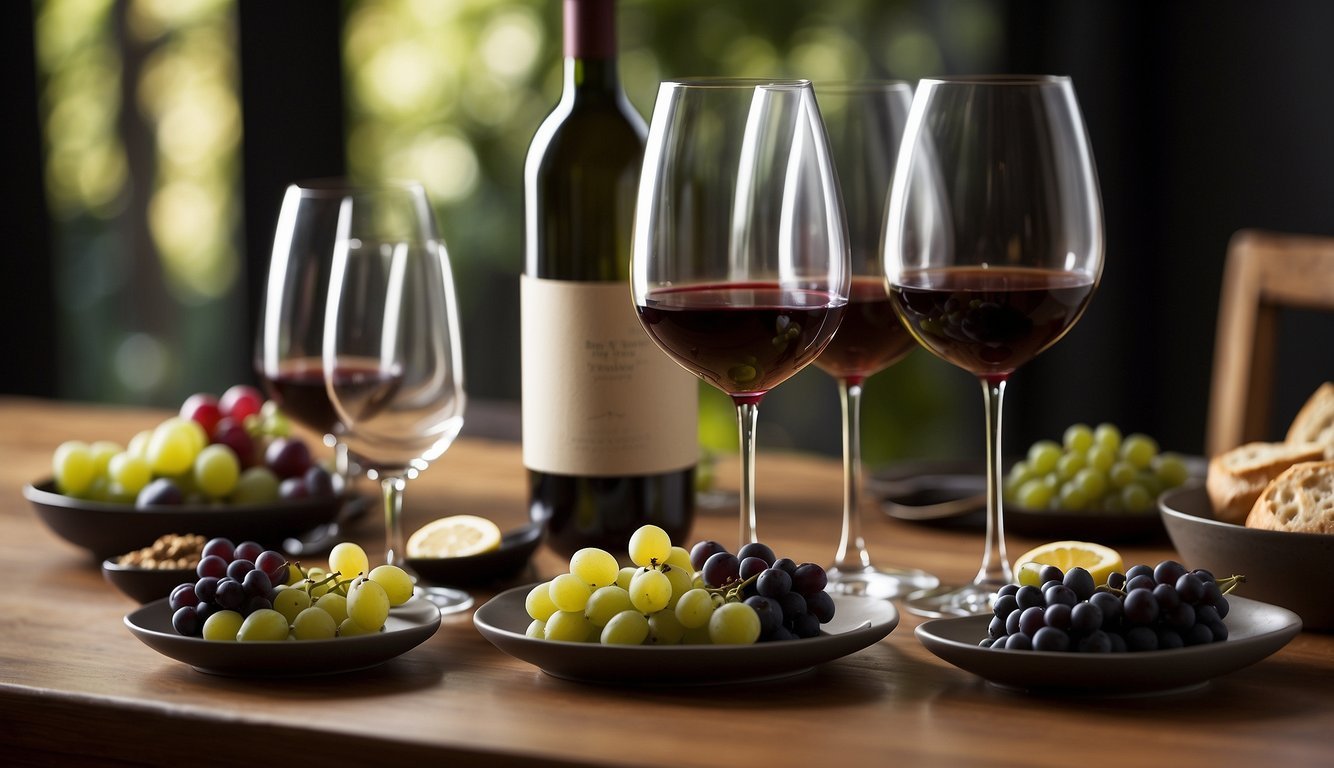
During a wine tasting party, palate cleansers are a must. 🥖 They help you taste each wine without lingering flavors from the previous one.
Here are some great options:
Bread is a popular choice.
Plain white bread or a baguette can absorb leftover flavors.
Plus, it helps keep you a bit more sober.
Water crackers are another go-to.
They’re simple and won’t interfere with the tastes of the wines you’re sampling.
Cheese might surprise you, but mild varieties like mozzarella or gouda work well.
They add a creamy texture that can reset your taste buds.
Sparkling water can be refreshing between wines.
The bubbles help clean your palate and prepare you for the next sip.
Lastly, apple slices, especially green ones, can be effective.
Their mild tartness can cleanse your mouth and get you ready for the next wine. 🍏
6) Offer Water
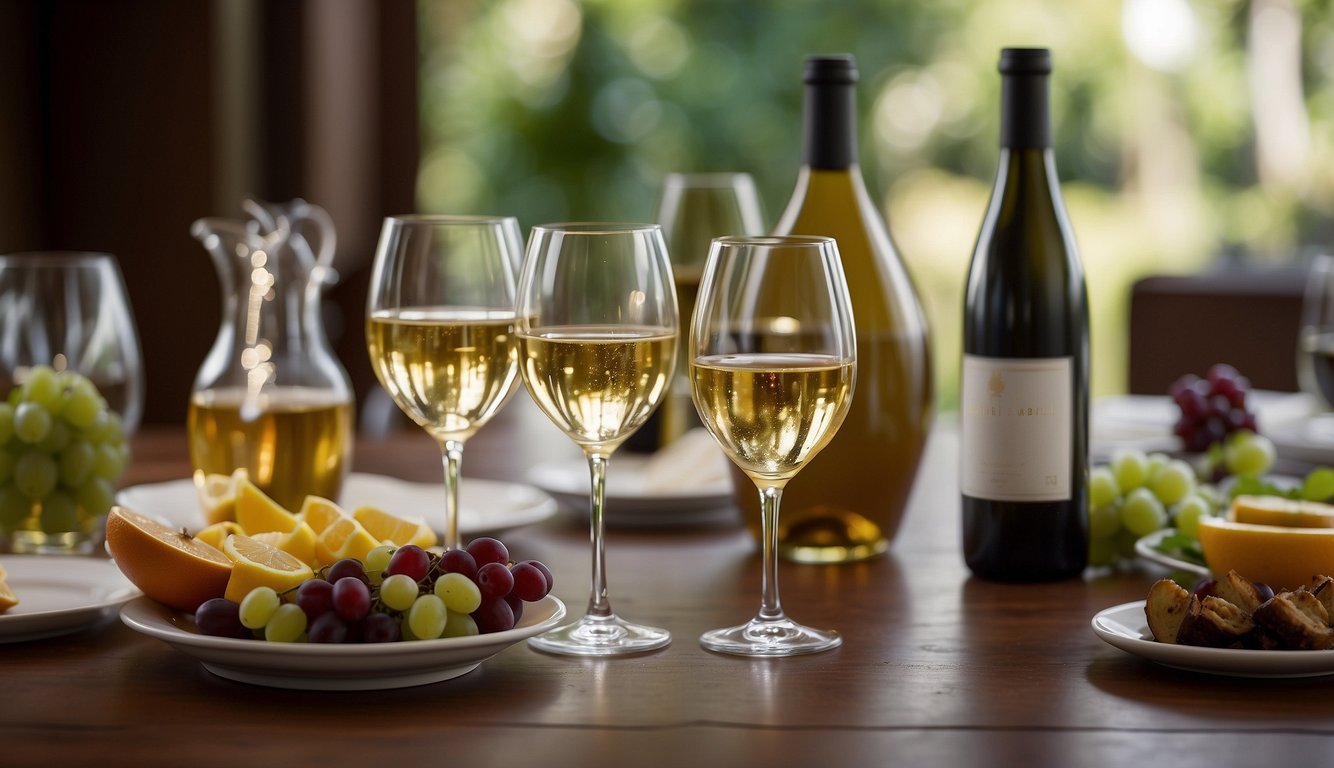
Always have plenty of water available at your wine tasting party. 💧 This helps guests stay hydrated and keeps their palates fresh.
Water is crucial for rinsing glasses between different wines. 🍷 It helps prevent mixing flavors, so each wine’s true taste can shine through.
Providing water also gives guests a way to cleanse their palates.
After tasting several wines, a sip of water can refresh the taste buds. 🌊 This will keep the tasting experience enjoyable and clear.
Remember to place water bottles or pitchers in easily accessible spots.
You don’t want your guests searching for water during the event.
Consider adding some slices of lemon or cucumber to the water. 🥒🍋 It adds a refreshing touch without overpowering the wine flavors.
Offering water may seem like a small detail, but it makes a big difference.
Happy tasting! 🍇
7) Prepare Light Appetizers
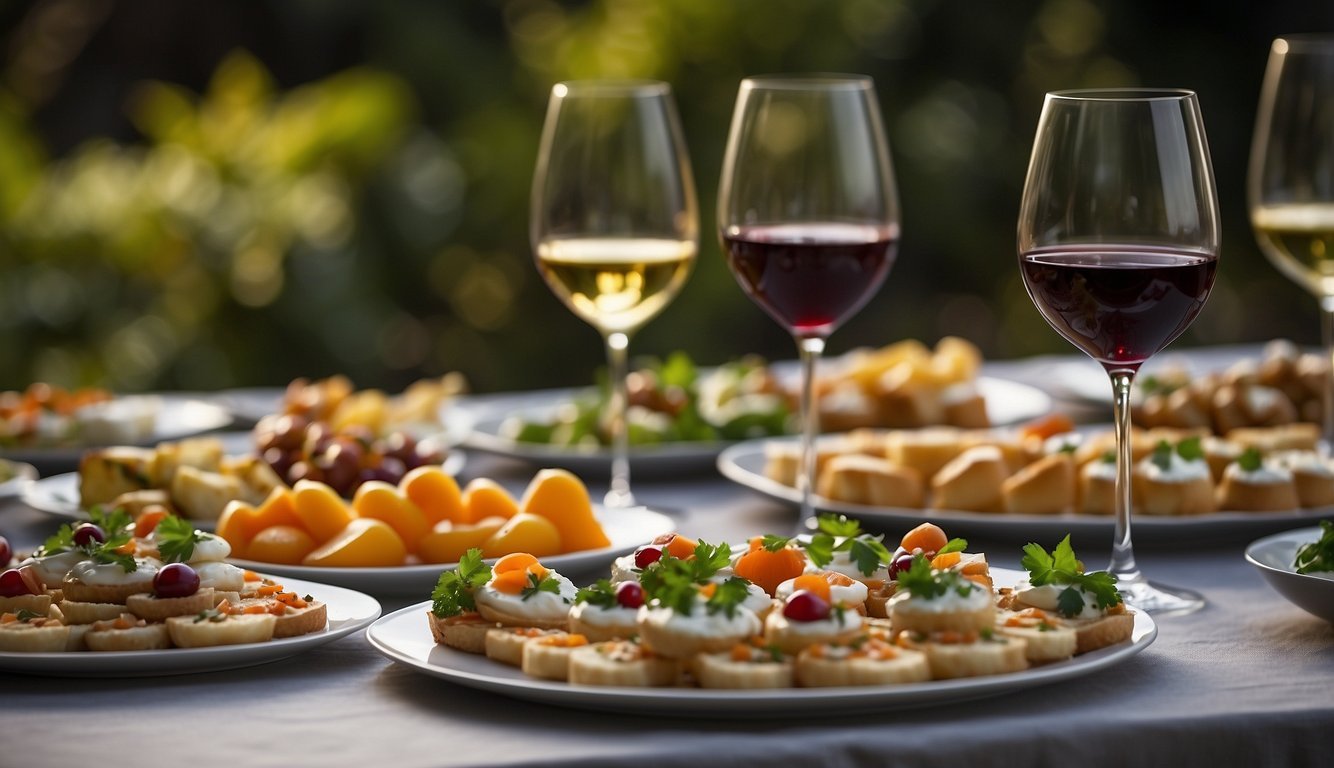
When hosting a wine tasting party, light appetizers are key.
You want your guests to enjoy the wine without feeling too full.
Pick snacks that are easy to handle and eat in one or two bites. 🍷🧀
Cheese and crackers are a go-to.
Select a mix of soft and hard cheeses to please different palates.
Pair them with various crackers or bread slices.
Fresh fruits like grapes, berries, and apple slices work well too.
They complement many wines and add a refreshing touch.
Consider small, savory items like stuffed olives, nuts, and mini quiches.
These pairings can enhance the flavors of the wine.
Don’t forget about seafood! Shrimp cocktails or smoked salmon on tiny toasts can be a hit, especially with white wines. 🍤
Including items like marinated veggies or a simple charcuterie board adds variety.
This approach offers a range of tastes and textures.
Remember, the goal is to boost the wine experience, not overshadow it.
Happy hosting!
8) Arrange Cheese Pairings
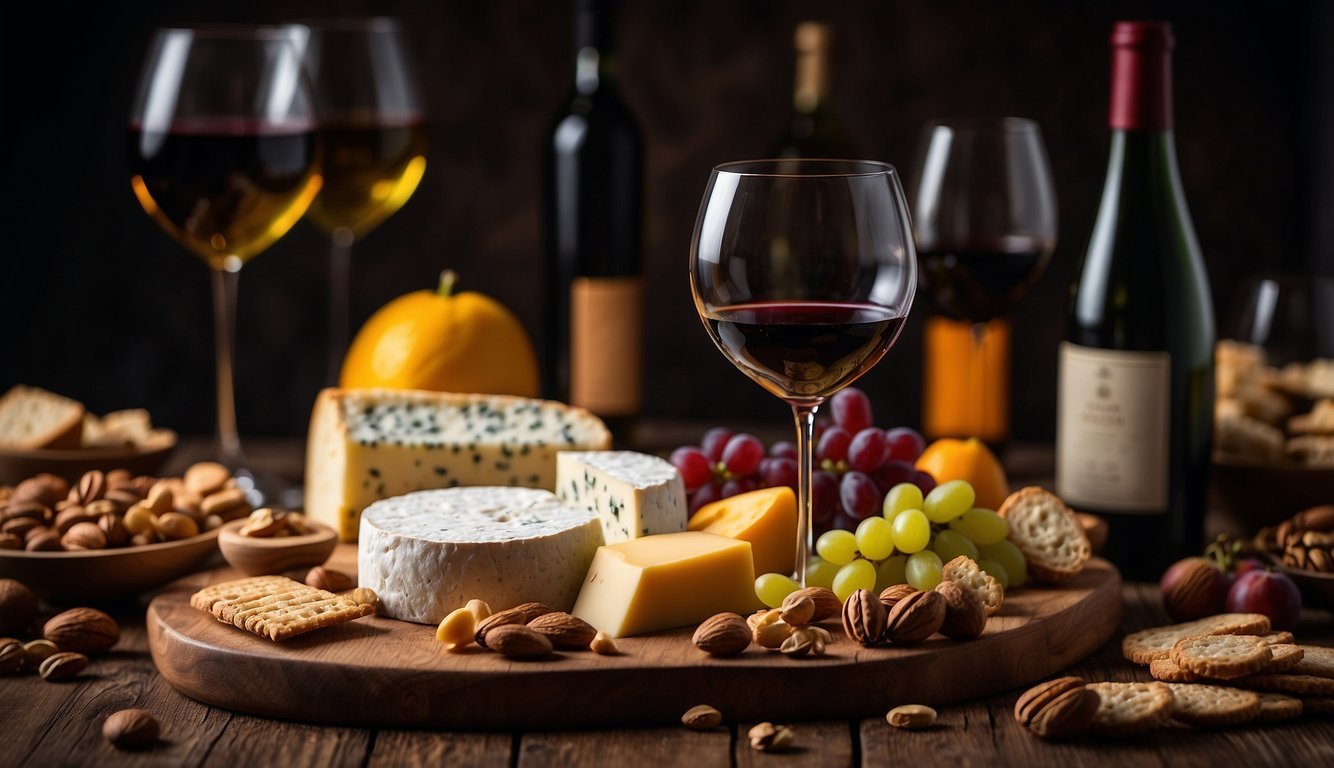
Choosing the right cheese can make your wine tasting party a hit! 🎉 Start by picking a few different types of cheese.
Variety is key.
Hard cheeses like Gouda and Aged Cheddar are excellent.
These pair well with red wines like Cabernet and Malbec.
Soft cheeses? Go for Brie or Camembert.
These match perfectly with white wines like Chardonnay. 🧀🍷
For guests with dietary restrictions, offer cheese made from sheep or goat milk.
Manchego is a great option.
It pairs well with sparkling wines. 🐑🧀
Don’t forget to let the cheese sit at room temperature for about 30 minutes before your guests arrive.
This ensures maximum flavor.
Serve the cheese with some light snacks.
Fruits, veggies, and crackers are perfect.
Keep it simple so the cheese and wine remain the focus. 🍇🍏
Experiment and have fun with your pairings.
Your guests will appreciate the effort.
Happy tasting! 🥂
9) Set Up a Wine Tasting Station
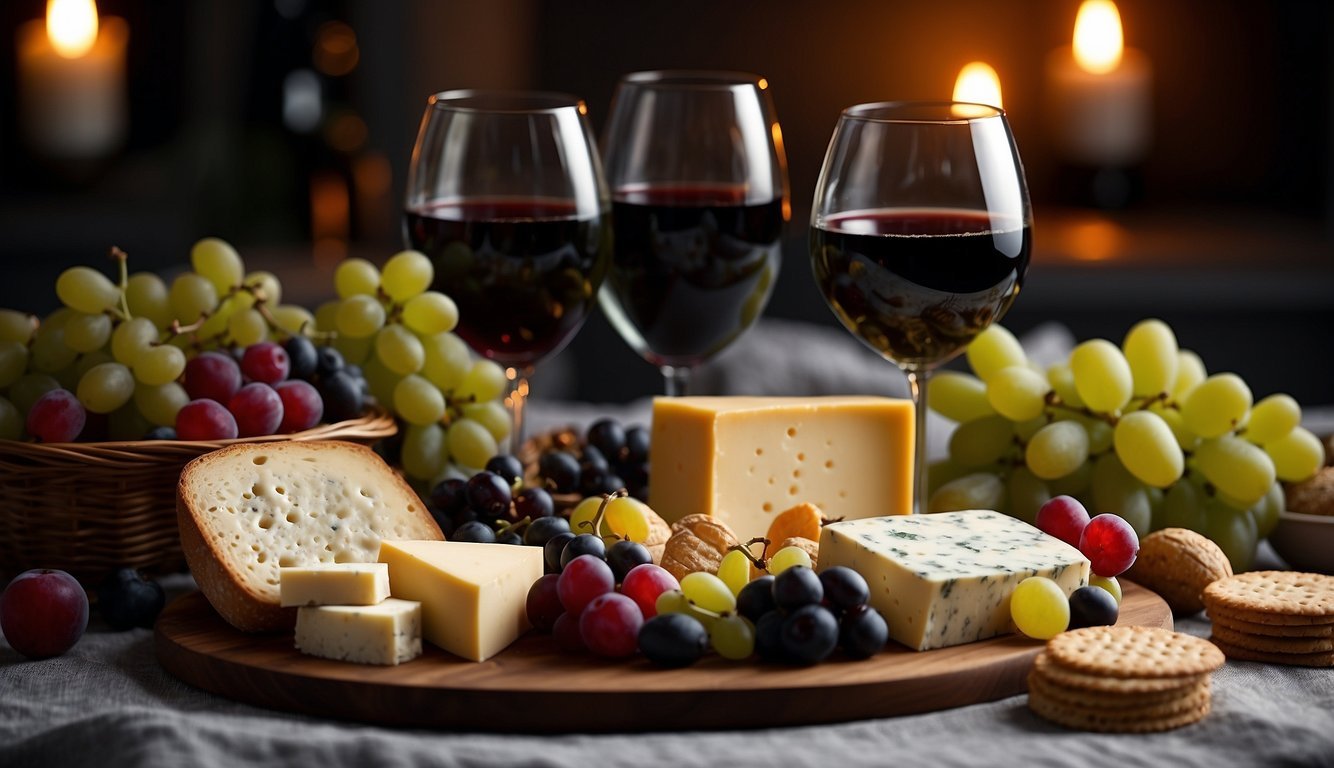
Setting up a wine tasting station is easy and fun 😊.
Start by choosing a well-lit area where guests can easily see the wine’s color.
A clean, neutral-smelling space is best, as strong odors can affect the taste of the wine.
Provide each guest with at least two wine glasses 🍷.
This allows them to compare wines side-by-side.
A small table or counter works well to hold the bottles, glasses, and any tasting notes.
Organize the wines in the order they’ll be tasted.
Going from light to heavy or from dry to sweet helps cleanse the palate.
Numbering the bottles can make it easier for everyone to follow along.
Offer some palate cleansers like bread, crackers, or plain water.
These help to reset the taste buds between different wines.
Having a spittoon or bucket is a good idea too.
This way, guests can taste without drinking too much if they choose.
Finally, make the space inviting with comfortable seating and proper lighting.
If possible, use a tablecloth and some simple decorations to add a touch of elegance.
10) Have Spit Buckets Ready
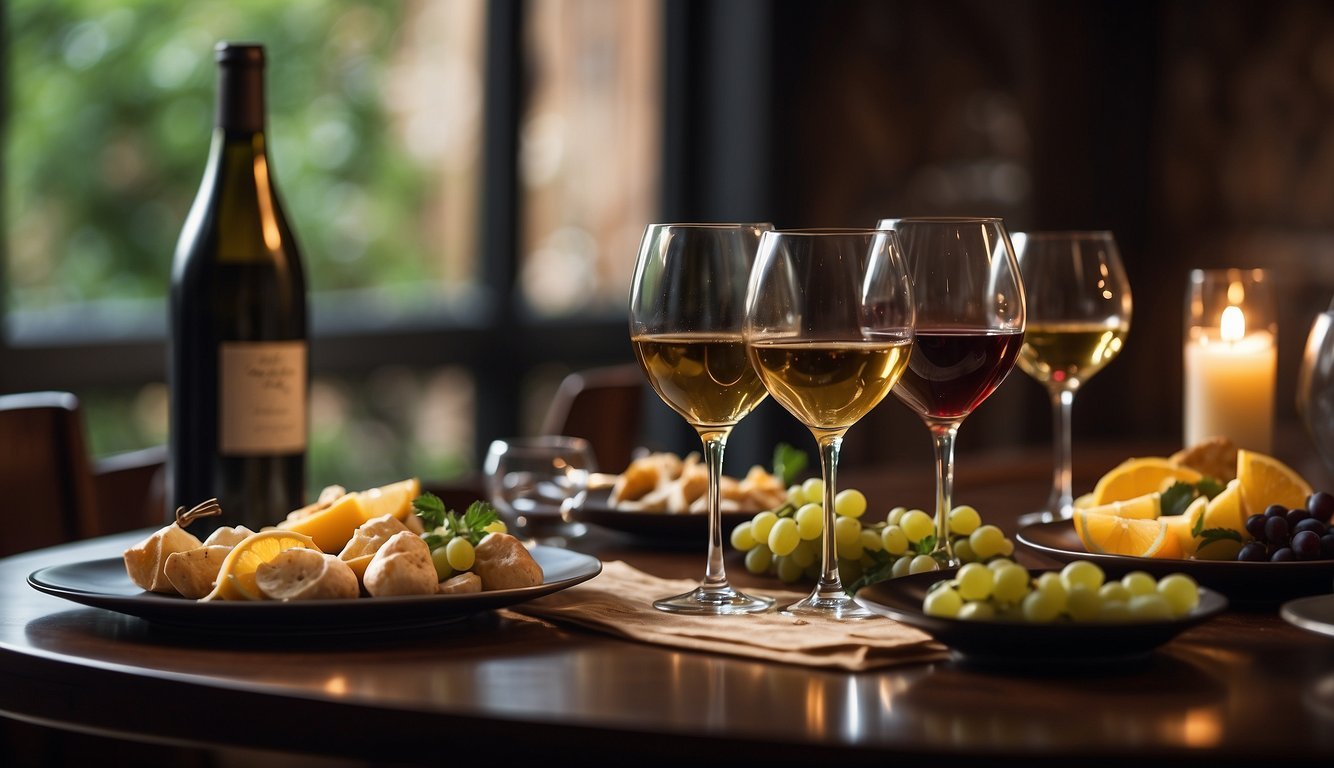
When hosting a wine tasting party, having spit buckets is a must. 🚮 Not everyone will want to swallow each wine they taste, especially if you’re sampling many bottles.
Spit buckets keep your guests from getting too tipsy too quickly. 🍷 They allow everyone to taste and compare more wines without feeling overly affected by the alcohol.
Place spit buckets within easy reach for all guests.
You might need multiple buckets depending on the size of your party.
This ensures no one has to get up or move around too much to use them.
Also, don’t forget some paper towels or napkins nearby.
This helps with any spills and keeps everything neat and tidy. 🧻
So, grab some buckets, set them around your tasting area, and let your guests enjoy the wines responsibly!
11) Scorecards for Guests
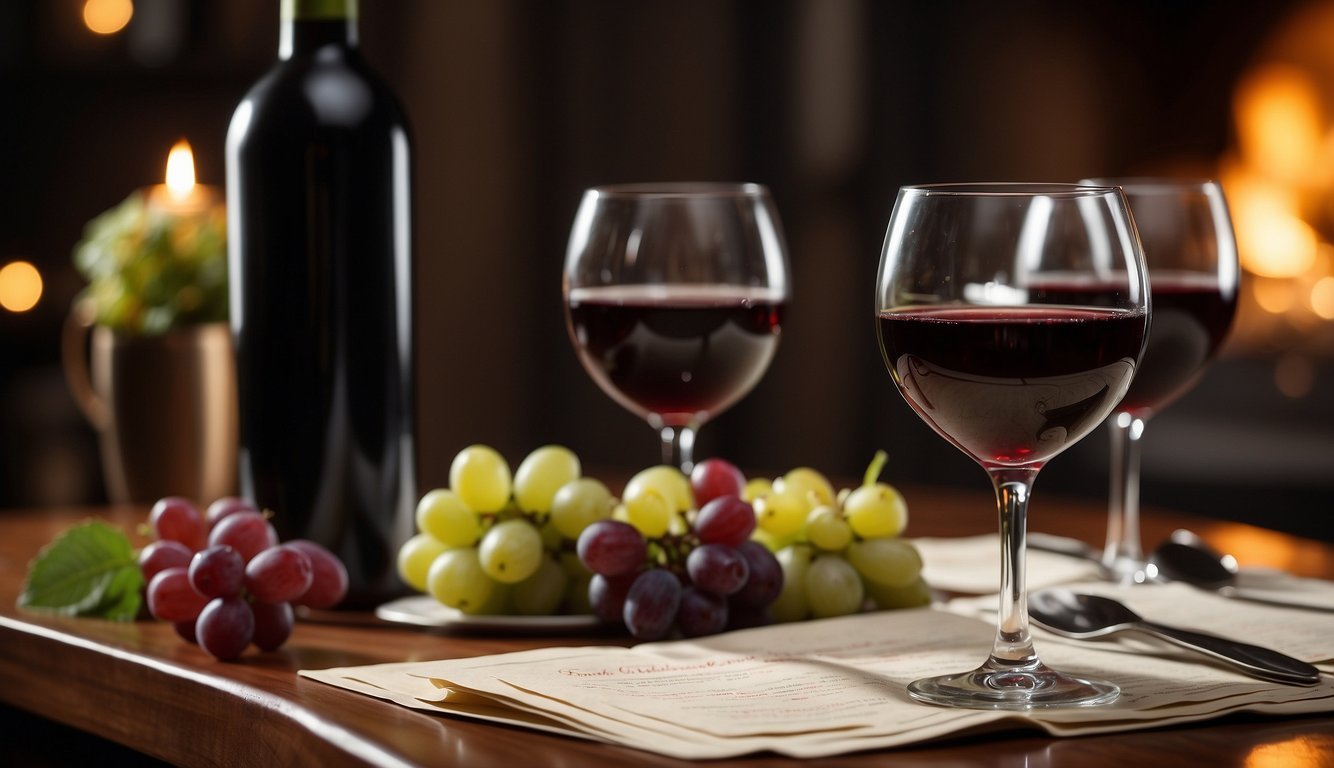
Scorecards are a must-have at any wine tasting party 🍷.
They help guests keep track of each wine they taste.
Provide everyone with a scorecard and a pen or pencil.
Make sure there’s enough space on the card for notes on each wine’s appearance, aroma, taste, and overall rating.
It’s helpful to have instructions on the scorecard.
This way, even beginners can easily join in on the fun.
You can find free printable scorecards online or create your own.
Keep the scorecards simple and fun.
Remember, the goal is for everyone to have a great time exploring different wines.
12) Create a Relaxed Atmosphere

To make your wine tasting party enjoyable, set up a comfy and inviting space.
Use soft lighting to create a warm glow.
Dim lights can help people relax, but make sure it’s bright enough to see the wine.
Add some candles for a cozy feel. 🕯️
Play some soft background music that won’t overpower conversations.
Think jazz, acoustic, or classical tunes.
The right music can set the perfect mood.
Comfortable seating is a must.
Make sure there are enough chairs for everyone, and try to arrange them in a circle or a way that encourages mingling.
Decorate with simple, elegant touches.
Fresh flowers in a vase or a bowl of seasonal fruit can add a nice touch.
Keep the space free from strong odors.
This ensures everyone can fully enjoy the wine’s aroma.
Avoid strong-smelling foods or scented candles.
Don’t forget to have a few snacks.
Cheese, crackers, and fruit are great choices.
They complement the wine and help keep hunger at bay.
Encourage your guests to relax and have fun.
A welcoming host makes all the difference. 🥂
Choosing the Right Wines

Choosing the right wines for your tasting party is crucial.
Make sure to pick a variety that will impress your guests and match well with your snacks.
Focus on different types and consider their regions.
Variety and Pairing
Selecting different varieties is a must! Aim for 4-6 wines to keep it interesting.
You can go for reds, whites, and maybe a rosé or sparkling wine.
This variety pleases different tastes.
Pairing is key! 🍷 Choose wines that match your snacks.
Light wines pair well with mild cheese and crackers, while bold wines suit stronger cheese and meats.
Here’s a simple guide:
- Light Whites: Goat cheese, mild fish
- Bold Reds: Aged cheese, red meat
- Sparkling Wines: Brie, light appetizers
Remember, the goal is to enhance the flavors of both the wine and the food.
Understanding Wine Regions
Knowing where your wine comes from adds a fun twist.
Famous regions like Napa Valley or Bordeaux are recognized and usually deliver high quality.
But don’t shy away from exploring lesser-known regions.
Each region has its strengths.
For example:
- Napa Valley: Known for bold reds like Cabernet Sauvignon
- Bordeaux: Great for both robust reds and crisp whites
- Sonoma: Offers a mix of both red and white varieties
Try to pick wines from at least two or three regions.
This not only adds diversity but also sparks interesting conversations.
And remember, every bottle tells a story.
Setting Up the Perfect Tasting Environment

Creating the ideal environment for your wine tasting party is key.
You’ll need to focus on glassware essentials and creating the right lighting and ambience.
Glassware Essentials
Having the right glassware is important for a successful wine tasting party.
Each wine type should be tasted in the proper glass to bring out its flavors and aromas.
Make sure to have enough wine glasses for each guest.
It’s best if each guest can have two glasses at once to compare wines side-by-side. Riedel glasses are a popular choice, but any good-quality glass will do.
- Red Wine Glasses: Larger bowls to help aerate the wine.
- White Wine Glasses: Smaller bowls for less aeration.
- Sparkling Wine Glasses: Tall, slender flutes to keep bubbles.
Don’t forget to have water available for rinsing glasses between tastings.
A good wine opener or corkscrew is also a must-have. 🍷🔑
Lighting and Ambience
Lighting sets the mood and helps guests see the wine’s color clearly.
Host your tasting in a well-lit room.
Natural light is ideal, but if you rely on artificial light, make sure it’s bright but not too harsh.
Dimmable lights can help you adjust the brightness as needed 🌞.
The ambience should be calm and free of distractions.
Avoid strong smells like cooking or scented candles, as they can interfere with the wine’s aroma.
Keep the room at a comfortable temperature—around 68°F (20°C) is ideal.
Create a relaxed, inviting atmosphere.
A simple table setup with neutral decor works best.
Background music at a low volume can add to the enjoyment without being too distracting.
Happy tasting! 🍇✨
Tasting Techniques
Proper tasting techniques can help you and your guests appreciate the subtleties and complexities of each wine.
This section covers the essential steps and methods to make your wine tasting experience more enjoyable and insightful.
The Five S’s of Wine Tasting
The Five S’s 🥂—See, Swirl, Smell, Sip, and Savor—are key steps in wine tasting.
See: Look at the wine’s color and clarity.
Hold your glass up to the light to see its hue, which can tell you about the wine’s age and variety.
Swirl: Swirling the wine in your glass helps release the wine’s aromas.
It may seem fancy, but it’s crucial for full aromatic appreciation.
Smell: Take a moment to smell the wine.
This step can reveal the wine’s bouquet, which includes the different scents and complexities.
Sip: Take a small sip and let it linger in your mouth.
Pay attention to the flavors and how the wine evolves from when it first hits your palate to when you swallow.
Savor: Think about the wine’s finish, or aftertaste.
Good wines have a lasting impression, revealing more about their character.
How to Evaluate Aroma and Flavor
Aroma: Smelling the wine is often the most telling part of the tasting process.
Give yourself time to identify different scents.
You might notice fruity, floral, or even earthy aromas.
- Primary Aromas: Come from the grape itself (like fruit and floral notes).
- Secondary Aromas: Result from fermentation (like yeasty or bready scents).
- Tertiary Aromas: Develop from aging in the bottle (like nutty or spicy notes).
Flavor: When sipping the wine, pay attention to different flavors and textures.
Consider sweetness, acidity, tannins, and body.
- Sweetness: Detectible at the tip of the tongue.
- Acidity: Causes mouth-watering sensation, felt on the sides of the tongue.
- Tannins: Provides a drying, puckering feel, usually from red wines.
- Body: The weight or richness of the wine in your mouth (light, medium, or full).
Keep notes in a scorecard 📋 for better comparison and to help remember your favorites.
Happy tasting! 🍇🍷

